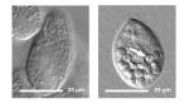New report finds Cambodia's HIV/AIDS fight at critical crossroads in funding, prevention
Despite past successes, country now must make wise choices in preventing infections, lessening dependence on donors, says study on the future of AIDS in Cambodia
2010-12-21
(Press-News.org) Phnom Penh, Cambodia (21 December, 2010) – Despite Cambodia's remarkable history in driving down HIV infections, a report released today on the future of AIDS in the country argues that future success is not guaranteed and the government needs to focus increasingly on wise prevention tactics and assume more of the financing of its AIDS program.
The report, called The Long-Run Costs and Financing of HIV/AIDS in Cambodia, written by Cambodian experts working closely with staff of the Results for Development Institute (R4D), based in Washington, D.C., finds that Cambodia, in a best-case scenario, could reduce the infections to 1,000 people a year in 2031 – a half-century after AIDS was first identified. That is down from an estimated 2,100 infections last year and from the peak of 15,000 a decade ago.
But the report's authors also say that if Cambodia's AIDS efforts stall and current coverage of key services declines, especially in carefully targeted prevention, the number of infections could climb to 3,800 a year in 2031 – nearly a four-fold increase over the best-case scenario. The report concludes that the government's successful track record will only be maintained if it scales up prevention services for the most at-risk populations, such as sex workers, men having sex with men, and injecting drug users.
"We welcome this in-depth and forward-looking report for our country," said Cambodia's Minister of Health H.E. Dr. Mam Bunheng. "Cambodia has a long history of fighting HIV/AIDS head-on, with effective prevention strategies, and we believe that this report will help us sharpen our strategies. Our goal is to further prevent the number of HIV infections in our country and we will continue on that path."
In Cambodia, HIV/AIDS was first identified in 1991. Only a few years later, experts warned that the epidemic had taken off rapidly and that Cambodia risked becoming the Asian country with the worst AIDS problem. In response, the country attacked the epidemic vigorously, earning international recognition for its success. Between 1998 and last year, Cambodia dramatically reduced new infections and made anti-retroviral treatment widely available. By 2009, an estimated 93 percent of those eligible for AIDS drugs were receiving them.
Still, Cambodia's AIDS epidemic, fueled largely by unprotected heterosexual sex between men and female sex workers, remains volatile and could spread rapidly without targeted prevention efforts, the new report says.
The cost of the national AIDS program also has grown from US$21 million in 2003 to US$51.8 million in 2008, raising some concerns among government and donor officials about their ability to sustain a growing level of spending to fight the epidemic over the years to come. Donors now fund 90 percent of Cambodia's AIDS program.
The report is the third in a series of studies done by the financing group of aids2031, an international initiative that has brought together some of the world's experts on AIDS. The group also issued a report on the global trends in financing the AIDS fight, which was summarized in a paper published earlier this year in The Lancet, and a report on South Africa's epidemic, which was released in mid-November.
Robert Hecht, managing director of R4D and overall coordinator of the series of reports, said that the Cambodian study has particular significance for countries in Asia, Latin America, and Eastern Europe that are fighting AIDS epidemics largely confined to specific at-risk groups.
"Cambodia is an important example of a country that was facing a possible catastrophe a decade ago and has averted that thanks to bold actions," Hecht said. "But there's no room for complacency. This is the moment for Cambodia to strike a bargain with its outside funders such as the Global Fund, Australia, and the U.S. If these funders maintain a modest level of financial support to help preserve Cambodia's gains to date, the government can gradually step in to assume fuller and more sustainable funding of its AIDS program."
H.E. Dr. Mean Chhi Vun, Director of the National Centre for HIV/AIDS, Dermatology and STD, said that the report comes at an important time for the Cambodian government as it begins to assume more of the cost of AIDS programs from donors. "This report will play a key role in our discussions on how to move forward," Dr. Vun said. "We are committed to finding the most cost-efficient solutions as well as the most effective programs. We will draw upon our own experiences over the last decade and more, but we will also use these important findings to help guide us."
The report examines the costs in fighting Cambodia's epidemic under various strategies, ranging from US$ 1.4 billion during 2009 to 2031 under the current plan, to US$2.3 billion over the 22-year period in a dramatically stepped-up prevention plan – a differential of $900 million, or nearly 40 percent. The report's authors recommend a third course that stops nearly as many new infections as the most expensive approach, but costs much less because it emphasizes spending selectively on the highest impact prevention services, such as promoting consistent condom use in high risk settings.
"Cambodia has many choices in front of it," said Dr. Vonthanak Saphonn, the lead Cambodian author of the report and Deputy Director of the National Institute of Public Health. "Our recommendation is that Cambodia needs to focus investments on HIV/AIDS in those areas that are most cost-effective. This may mean that the country has to evaluate each intervention and focus on those that are contributing the most to the national program in a cost-effective manner."
Richard Skolnik, a professor of public health at George Washington University and the lead technical adviser to R4D on the project, said he believes the country's past history of success in fighting AIDS bodes well for the future. But he said difficult financial decisions will have to be made now.
"We have every reason to believe Cambodia can continue its effective fight against the epidemic," Skolnik said. "But Cambodia is very dependent on its external partners on financing, and if they don't put enough government money into the program and focus on the wisest investments, even this outstanding program could be threatened."
Tony Lisle, UNAIDS Country Coordinator for Cambodia, welcomed the report and said he hoped it would make a strong contribution to the country's ongoing fight against AIDS. "I hope this provides an opportunity for Cambodian officials to intensify their already strong efforts against AIDS with the kind of vigor it has shown in the past," Lisle said. "Cambodia has been a shining example around the world when it comes to lowering HIV infections, and I believe it can now make further adjustments that will allow it to remain a leader."
INFORMATION:
The Results for Development Institute (R4D) delivers policy analysis, critical information, decision-making tools, and policy advice for governments, civil society organizations, and external funders to use to reduce poverty and accelerate social and economic progress in low and middle-income countries. Working in areas such as economics and finance, health policy, education, management, and governance, R4D concentrates on long-term engagements, where we can translate ideas and evidence into sound policies and programs that enable countries and development partners to achieve results. We combine the research and analytic methods of a think tank with the action orientation of a program implementing organization.
The National Centre for HIV/AIDS Dermatology and STDs (NCHADS) is a government agency of Cambodia under the direction of the Ministry of Health. The agency is devoted to managing the treatment and prophylaxis of HIV and STDs. NCHADS' main offices are located in Phnom Penh.
ELSE PRESS RELEASES FROM THIS DATE:
How often do giant black holes become hyperactive?
2010-12-21
A new study from NASA's Chandra X-ray Observatory tells scientists how often the biggest black holes have been active over the last few billion years. This discovery clarifies how supermassive black holes grow and could have implications for how the giant black hole at the center of the Milky Way will behave in the future.
Most galaxies, including our own, are thought to contain supermassive black holes at their centers, with masses ranging from millions to billions of times the mass of the Sun. For reasons not entirely understood, astronomers have found that these ...
New study upends thinking about how liver disease develops
2010-12-21
In the latest of a series of related papers, researchers at the University of California, San Diego School of Medicine, with colleagues in Austria and elsewhere, present a new and more definitive explanation of how fibrotic cells form, multiply and eventually destroy the human liver, resulting in cirrhosis. In doing so, the findings upend the standing of a long-presumed marker for multiple fibrotic diseases and reveal the existence of a previously unknown kind of inflammatory white blood cell.
The results are published in this week's early online edition of the Proceedings ...
UCSB scientists demonstrate biomagnification of nanomaterials in simple food chain
2010-12-21
(Santa Barbara, Calif.) –– An interdisciplinary team of researchers at UC Santa Barbara has produced a groundbreaking study of how nanoparticles are able to biomagnify in a simple microbial food chain.
"This was a simple scientific curiosity," said Patricia Holden, professor in UCSB's Bren School of Environmental Science & Management and the corresponding author of the study, published in an early online edition of the journal Nature Nanotechnology. "But it is also of great importance to this new field of looking at the interface of nanotechnology and the environment."
Holden's ...
New imaging advance illuminates immune response in breathing lung
2010-12-21
Fast-moving objects create blurry images in photography, and the same challenge exists when scientists observe cellular interactions within tissues constantly in motion, such as the breathing lung. In a recent UCSF-led study in mice, researchers developed a method to stabilize living lung tissue for imaging without disrupting the normal function of the organ. The method allowed the team to observe, for the first time, both the live interaction of living cells in the context of their environment and the unfolding of events in the immune response to lung injury.
The finding ...
Strange new twist: Berkeley researchers discover Möbius symmetry in metamaterials
2010-12-21
Möbius symmetry, the topological phenomenon that yields a
half-twisted strip with two surfaces but only one side, has been a source of fascination since its discovery in 1858 by German mathematician August Möbius. As artist M.C. Escher so vividly demonstrated in his "parade of ants," it is possible to traverse the "inside" and "outside" surfaces of a Möbius strip without crossing over an edge. For years, scientists have been searching for an example of Möbius symmetry in natural materials without any success. Now a team of scientists has discovered Möbius symmetry in ...
New study examines immunity in emerging species of a major mosquito carrer of malaria
2010-12-21
In notable back-to-back papers appearing in the prestigioous journal Science in October, teams of researchers, one led by Nora Besansky, a professor of biological sciences and a member of the Eck Institute for Global Health at the University of Notre Dame, provided evidence that Anopheles gambiae, which is one of the major mosquito carriers of the malaria parasite in Sub-Saharan Africa, is evolving into two separate species with different traits.
Another significant study appearing in this week's edition of the Proceedings of the National Academy of Sciences (PNAS) and ...
New study focuses on nitrogen in waterways as cause of nitrous oxide in the atmosphere
2010-12-21
Jake Beaulieu, a postdoctoral researcher the Environmental Protection Agency in Cincinnati, Ohio, who earned his doctorate at the University of Notre Dame, and Jennifer Tank, Galla Professor of Biological Sciences at the University, are lead authors of new paper demonstrating that streams and rivers receiving nitrogen inputs from urban and agricultural land uses are a significant source of nitrous oxide to the atmosphere.
Nitrous oxide is a potent greenhouse gas that contributes to climate change and the loss of the protective ozone layer. Nitrogen loading to river networks ...
The orange in your stocking: researchers squeezing out maximum health benefits
2010-12-21
VIDEO:
BYU nutritionist Tory Parker talks about his study into why oranges are so good for you.
Click here for more information.
Provo, Utah - In time for Christmas, BYU nutritionists are squeezing all the healthy compounds out of oranges to find just the right mixture responsible for their age-old health benefits.
The popular stocking stuffer is known for its vitamin C and blood-protecting antioxidants, but researchers wanted to learn why a whole orange is better for ...
Link between depression and inflammatory response found in mice
2010-12-21
Vanderbilt University researchers may have found a clue to the blues that can come with the flu – depression may be triggered by the same mechanisms that enable the immune system to respond to infection.
In a study in the December issue of Neuropsychopharmacology, Chong-Bin Zhu, M.D., Ph.D., Randy Blakely, Ph.D., William Hewlett, M.D., Ph.D., and colleagues activated the immune system in mice to produce "despair-like" behavior that has similarities to depression in humans.
"Many people exhibit signs of lethargy and depressed mood during flu-like illnesses," said Blakely, ...
Boosting supply of key brain chemical reduces fatigue in mice
2010-12-21
Researchers at Vanderbilt University have "engineered" a mouse that can run on a treadmill twice as long as a normal mouse by increasing its supply of acetylcholine, the neurotransmitter essential for muscle contraction.
The finding, reported this month in the journal Neuroscience, could lead to new treatments for neuromuscular disorders such as myasthenia gravis, which occurs when cholinergic nerve signals fail to reach the muscles, said Randy Blakely, Ph.D., director of the Vanderbilt Center for Molecular Neuroscience.
Blakely and his colleagues inserted a gene into ...
LAST 30 PRESS RELEASES:
Global societies unite to address environmental threats to heart health
Artificial light at night extends pollen season
Women see AI as riskier than men do
Push and pull in models of human migration
Mapping comedic timing, ta-da!
SEOULTECH researchers reveal strong public support for hydrogen fuel cell trucks
Dongguk University develops a new way to produce cheaper, more efficient green hydrogen
Scientists discover a hidden RNA “aging clock” in human sperm
New quantum boundary discovered: Spin size determines how the Kondo effect behaves
Ancient ‘spaghetti’ in dogs’ hearts reveals surprising origins of heartworm
Full value added tax on meat: a first step towards pricing the environmental damages caused by diets
Hidden mpox exposure detected in healthy Nigerian adults, revealing under-recognized transmission
Shingles vaccine linked to slower biological aging in older adults
A self-assembling shortcut to better organic solar cells
A two-week leap in breeding: Antarctic penguins’ striking climate adaptation
Climate risks to insurance and reinsurance of global supply chains
58% of patients affected by 2022 mpox outbreak report lasting physical symptoms
Golden Gate method enables rapid, fully-synthetic engineering of therapeutically relevant bacteriophages
Polar weather on Jupiter and Saturn hints at the planets’ interior details
Socio-environmental movements: key global guardians of biodiversity amid rising violence
Global warming and CO2 emissions 56 million years ago resulted in massive forest fires and soil erosion
Hidden order in quantum chaos: the pseudogap
Exploring why adapting to the environment is more difficult as people age
Society for Laboratory Automation and Screening welcomes new scientific director: Madeline M. Farley, Ph.D.
Austrian cow shows first case of flexible, multi-purpose tool use in cattle
Human nasal passages defend against the common cold and help determine how sick we get
Research alert: Spreading drug costs over the year may ease financial burden for Medicare cancer patients
Hospital partnership improves follow up scans, decreases long term risk after aortic repair
Layered hydrogen silicane for safe, lightweight, and energy-efficient hydrogen carrier
Observing positronium beam as a quantum matter wave for the first time
[Press-News.org] New report finds Cambodia's HIV/AIDS fight at critical crossroads in funding, preventionDespite past successes, country now must make wise choices in preventing infections, lessening dependence on donors, says study on the future of AIDS in Cambodia




